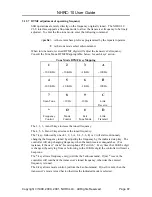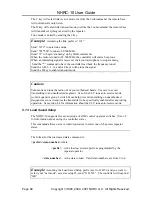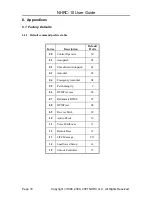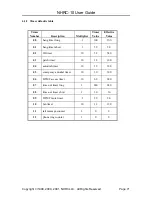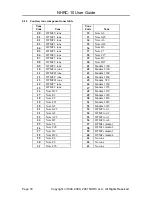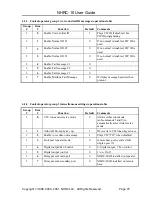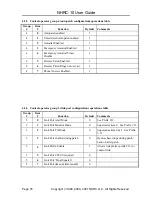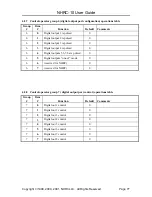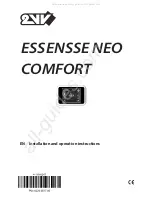
NHRC-10 User Guide
Copyright
1999, 2000, 2001, NHRC LLC. All Rights Reserved.
Page 63
5.12 Remote Base
The NHRC-10 Repeater Controller supports a remote base radio which can be used as a
link to another repeater system, a “slaved” repeater, or a remote base. The remote base
prefix is used to control the state of the remote base port. The remote base port can be
configured into four different modes:
•
In “alert mode,” repeater users are alerted to remote-base channel activity by a
different courtesy tone.
•
“Receive mode” transmits the remote base audio over the main repeater, but the
repeaters audio is not transmitted over the remote base.
•
“Transmit mode” is a completely linked state where the remote base audio is
transmitted over the repeater, and the repeater audio is transmitted over the
repeater.
•
The “Off” mode is an Off state where the remote base port is ignored.
5.12.1 Select remote base operating mode
To select a remote base operating mode, use the following command:
<prefix><mode>
where:
<prefix>
is the remote base prefix as programmed by the repeater operator.
<mode>
is the remote base operating mode.
Remote Base Operating Modes
Mode Description
0
off
1
alert mode
2
receive mode
3
transmit mode
Remote Base CI-V Control :
4
CI-V mode select
5
CI-V frequency select
6
CI-V VFO/Memory select
7
CI-V Memory Channel Select
8
CI-V Split Mode Select
9
CI-V fine tune mode
The NHRC-10 remote base supports the Icom
CI-V protocol to control an Icom
IC-706 Mk II G or similar radio as a frequency-agile remote base. Six additional
commands on the prefix support the mode control (AM, FM, USB, LSB), tuning,
memory channels, and split operation.



















